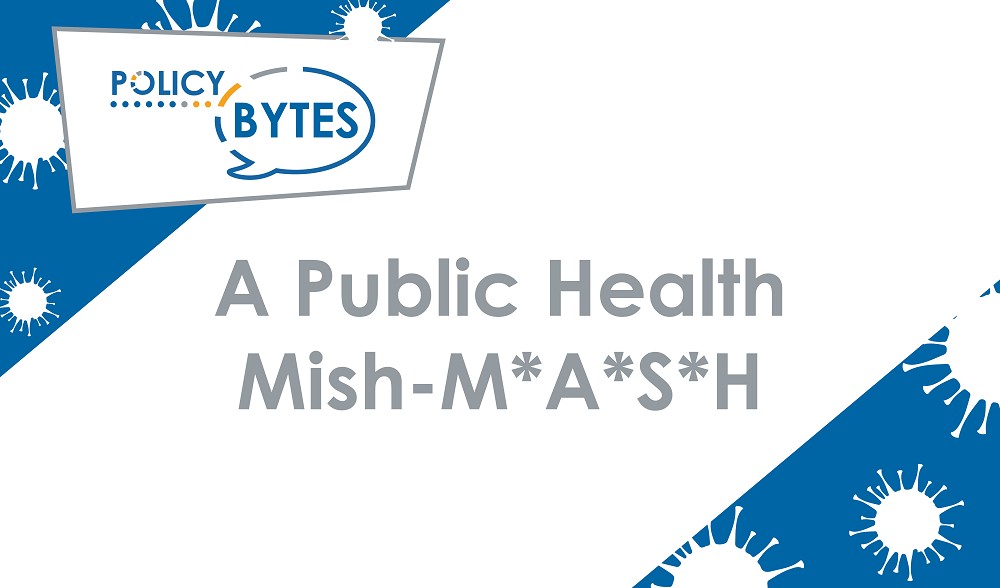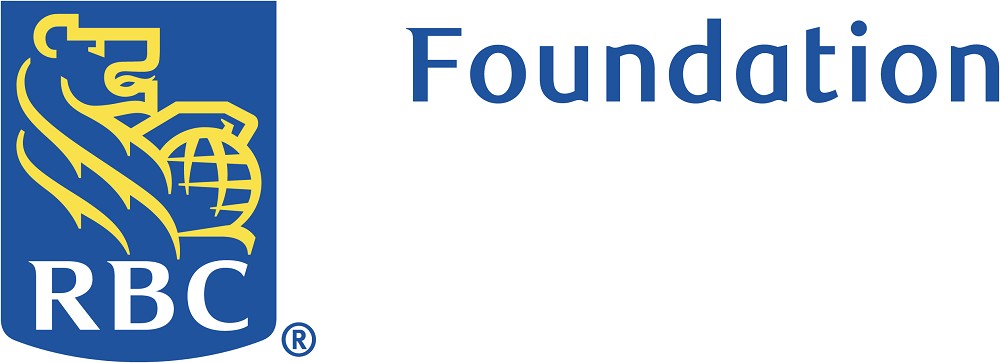A Public Health Mish-M*A*S*H
October 13, 2020 - There are a few things about the organization of public health in the province of Ontario that have complicated the kind of coordinated and organized response a crisis of the scale we are facing with COVID-19 requires.

Our public health system is made up of three principal components: the Ministry of Health, Public Health Ontario, and our 34 public health units.
The Ministry of Health is responsible for the overall functioning of the health system through the administration, coordination, and funding of health services throughout the province. An important aspect of the Ministry of Health is the newly-minted Ontario Health, which is tasked with the delivery of health care across the province, managing programs like Cancer Care Ontario and eHealth Ontario. Ontario Health took over all non-home and community care responsibilities from the previous LHIN system in late 2019. This means that it’s now their responsibility to plan, coordinate, and provide funding to local healthcare service providers across the province. Dr. David Williams is the Chief Medical Officer of Health with the ministry and is in charge of their public health capacities. Though the ministry itself doesn’t have much in the way of public health capacities.
Public Health Ontario (PHO) is tasked with providing scientific and technical advice to those working across sectors, to help inform policy and practices in the interest of the health of Ontarians. PHO operates as a separate entity from the government and Ministry of Health, but is accountable to the government through the Chair of their Board of Directors. The BoD sets the overall strategic direction of the organization and manages funds, but the CEO, who is not a part of the board, manages the day-to-day operations.
Public Health Units (PHUs), on the other hand, are independent organizations that provide health promotion and disease prevention programming to their jurisdictions. PHUs are established by a group of urban and/or rural municipalities, and can be either completely autonomous or integrated into municipal or regional governments. Interestingly, there’s little in their mandate that establishes a relationship between them and PHO. They’re governed by boards of health, who set strategic direction, but policy direction and day-to-day operations are the responsibility of each health unit’s Medical Officer of Health.
We can see that these are three independent organizations all trying to accomplish broadly the same goal: the health of Ontarians. However, reading through the legislative frameworks of each organization, there is very little accountability or connectivity between agencies. This makes coordinated efforts—the type necessary to overcome a pandemic—difficult to achieve. While PHUs are somewhat accountable to the Ministry for things like finances and board performance, there’s little that makes them accountable in terms of their policy decisions. There’s also nothing that links Ontario Health with PHO or the PHUs. This means that although the decisions of a PHU can impact healthcare service delivery—and vice-versa—they aren’t obligated to consult with service providers or work with them to create new regulations.
A good example of this is that many health units decided to stop immunization programs during the earlier stages of the pandemic, expecting the service to be picked up by healthcare providers. This decision, however, was made without a full understanding of the capacities of providers in towns across Ontario’s central, western and northern region. Some communities were left without access to required immunizations during the pandemic, and in other cases already-stretched hospital and clinic staff were left with another burden to shoulder[i].
This lack of integration and coordination has also made it hard to find the COVID information that you might need. There’s little in the way of a comprehensive one-stop-shop for information, and the information you find from different sources may conflict. For example, on the Algoma Public Health website, you can find information on testing, travel, and face masks, but you have to go to the Ontario Public Health website to find information for those in congregate living settings.
On the Thunder Bay District Health Unit website you can find information on mask-wearing from different agencies: TBDHU, Ontario Public Health, and the provincial government. TBDHU tells you that you should wash your hands a total of four times—before and after you don and remove the mask—while the other two resources only tell you to wash before putting it on and after taking it off. The PHO document indicates that you only need to wear a mask if you have symptoms or are caring for someone with symptoms, while the TBDHU website and government document tell you to don a mask wherever physical distancing is impossible. According to healthcare professionals, conflicting information from different levels was a large issue closer to the start of the pandemic, though it has been getting better[ii].
Clearly, there needs to be improvements to the way we manage our public health system in order to better deal with future public health crises. British Columbia uses a more integrated approach to healthcare—wherein Regional Health Authorities manage both public health and health service delivery, in addition to directly coordinating with the provincial government. This could be a model worth exploring for Ontario, to help ensure that decisions made in the name of public health are made without letting things fall through the cracks.
[i] Personal communication with Wilson Memorial General Hospital physicians
[ii] Personal communication with Wilson Memorial General Hospital physicians
Write for us
Mateo Orrantia is a Research Analyst at NPI
Thank you to our Experience North Sponsor 
The content of Northern Policy Institute’s blog is for general information and use. The views expressed in this blog are those of the author and do not necessarily reflect the opinions of Northern Policy Institute, its Board of Directors or its supporters. The authors take full responsibility for the accuracy and completeness of their respective blog posts. Northern Policy Institute will not be liable for any errors or omissions in this information, nor will Northern Policy Institute be liable for any detriment caused from the display or use of this information. Any links to other websites do not imply endorsement, nor is Northern Policy Institute responsible for the content of the linked websites.
Northern Policy Institute welcomes your feedback and comments. Please keep comments to under 500 words. Any submission that uses profane, derogatory, hateful, or threatening language will not be posted. Please keep your comments on topic and relevant to the subject matter presented in the blog. If you are presenting a rebuttal or counter-argument, please provide your evidence and sources. Northern Policy Institute reserves the right to deny any comments or feedback submitted to www.northernpolicy.ca that do not adhere to these guidelines.

Public Health MishMash
Posted By Anne Stewart on 11/9/2020 8:30:53 AM
As a retired Public Health Inspector I found this a good article that clearly explains the various bodies and some of the jurisdictional problems. I was surprised that the article did not go into Ontario Health Teams which could be considered similar to the BC model or regional health authorities mentioned in the last paragraph (but without the same autonomy and resources). Ontario certainly needs an overhaul and I would be happy to see it all restructured!
Re: Public Health MishMash
Posted By Evelynn - NPI Staff on 11/9/2020 10:42:52 AM
Thank you so much for your comment and glad that you enjoyed the blog. The author didn’t include the Ontario Health Teams in his blog because there are relatively few OHTs in the province and only two approved teams in Northern Ontario. He felt that their mandates and functions will be easier to grasp and take account of once the system is fully fleshed out in the province.
Another paper that you might be interested in reading is our “Integration of Care in Northern Ontario: Patient Medical Homes, Rural Health Hubs and Evolving Ontario Health Teams” which talks briefly about Ontario Health Teams along with Rural Health Hubs and Patient Medical Home. You can find it here: https://www.northernpolicy.ca/integration-of-care